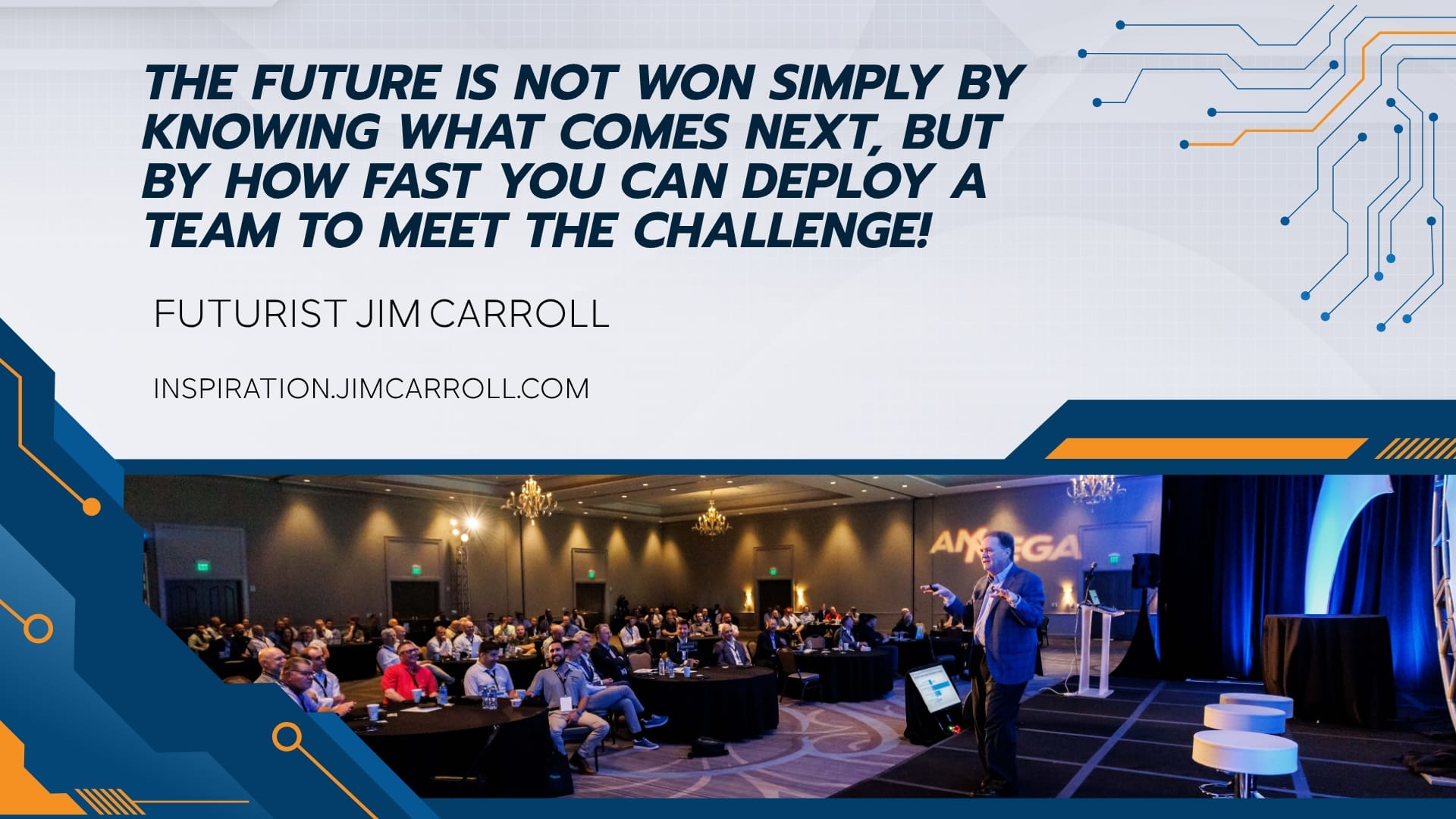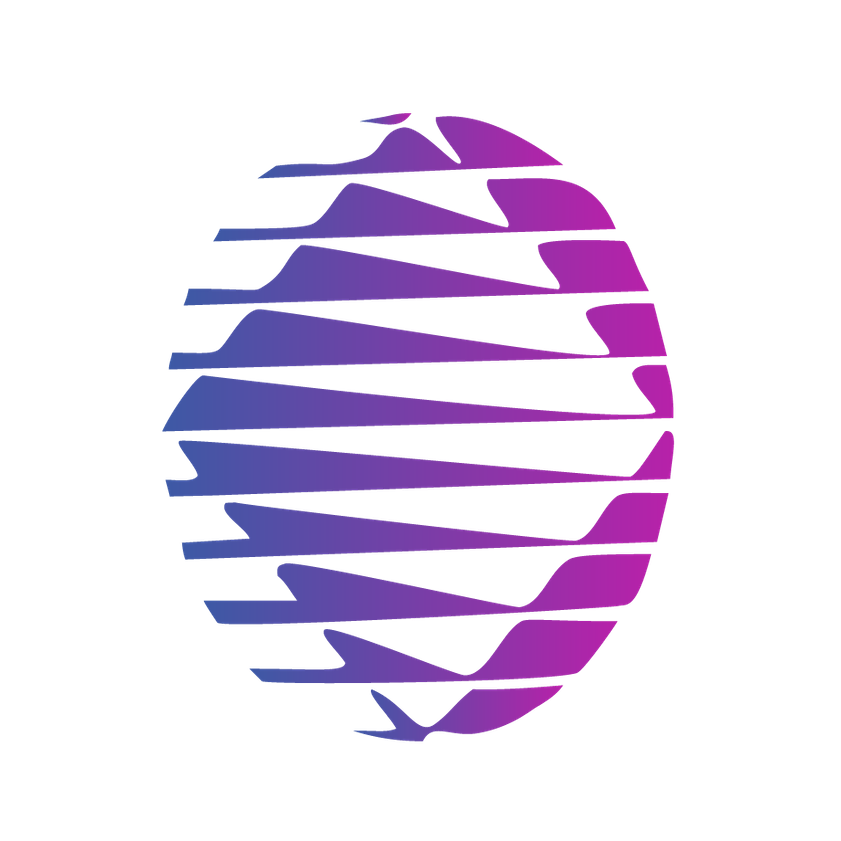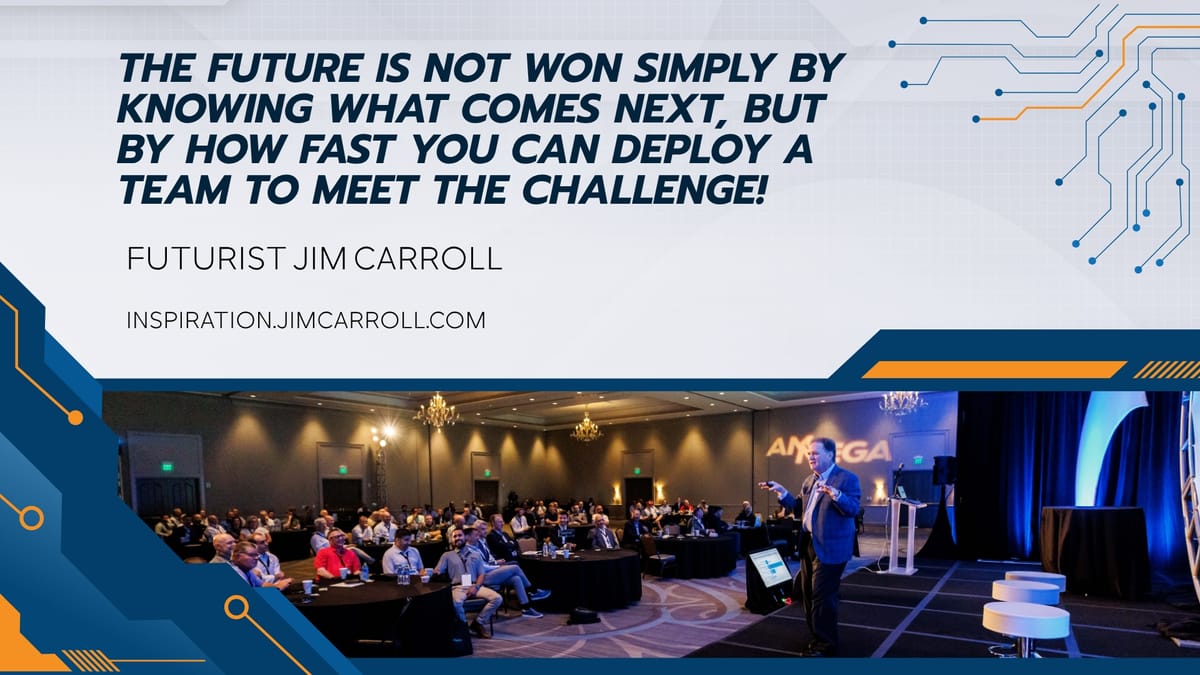"The future is not won simply by knowing what comes next, but by how fast you can deploy a team to meet the challenge!" - Futurist Jim Carroll

A client approached me for a keynote that went into the topic of the future of work.
He didn't want the typical focus found with the topic, which tends to come from a typical HR focus.
He wanted to know how to relate future trends to the future skills needed to align with those trends.
As fast-moving trends reshape every industry, a critical blind spot has emerged in today's leadership. Companies know they must upskill their workforce to deal with the trends that define tomorrow, and yet they believe their team is not ready. This means that while a forward-looking 85% of employers plan to prioritize upskilling for this new reality, their own managers are sounding the alarm, with 64% believing their employees cannot keep pace with future skill needs.
In other words, the workforce is not ready for the future!
This led me to create a new structure for a keynote topic - Solving the Acceleration Paradox: A New Playbook for the Future of Work. The full description is below, and it's over on my Signature Keynotes page.
In the midst of this, I came across this fascinating Wall Street Journal article late last night. This is precisely the type of path forward that I'm building into the keynote. THIS is the future of work!
Inside the Bank Where Almost Every Employee Is a Gig Worker
Wall Street Journal, Oct. 6, 2025
At Standard Chartered, a ‘talent marketplace’ lets workers take on in-house ‘gigs’ to smooth the way for AI adoption. And the idea is gaining traction elsewhere as the technology upends workforces.
-----
A man walks past a Standard Chartered Bank.
Its employees still have job titles and descriptions, but within the firm they are acting more like gig workers, taking on ad-hoc projects that may have little or nothing to do with the job for which they were hired.
The more flexible approach—mediated by an in-house ‘talent marketplace’—is critical to redeploying human capital that can be far more productive with AI tools, as well as speeding the pace of new AI deployments, said Tanuj Kapilashrami, the bank’s chief strategy and talent officer.
“The idea of a traditional job being a currency of work is going to become less and less relevant,” she said. “You don’t have to think of an individual by the job title or the job description, but you think of an individual as a collection of skills.”
Companies across the board are facing a misalignment between the way traditional corporate org charts stratify skills and getting the most out of AI. They are aware AI will change jobs—eradicating many while creating new ones—but they struggle to figure out how best to use the employees they have and reskill them for new roles. Companies like Moderna say they have been reworking teams not just around the capabilities of the people on staff, but also around what can be completed by AI tools.
The idea of internal skills marketplaces is gaining traction, according to Hatim Rahman, associate professor of management and organizations at the Kellogg School of Management at Northwestern University. Typically, the main benefit is employee retention: Workers who can flex and upskill across an organization are less likely to leave for those opportunities, he said. The marketplaces have also been “incidentally helpful” in reassigning work as AI rushes in, he added.
The gig work on Standard Chartered’s marketplace, which was set up in 2020, has helped create more than $8.5 million in value by enabling projects that might have been sidelined in the past due to understaffing or a lengthy hiring process, said Kapilashrami.
On the talent marketplace, workers can post and apply for gigs in things like basic programming or communications. Currently 60% of the bank’s employees globally are active on the platform, nabbing gigs they can spend up to eight hours on within their regular workweek. While they don’t make extra money, staff see it as an opportunity to network and build new skills, especially important at a time the labor market is shifting, Kapilashrami said.
For the company, the marketplace has been a way to best use the skills it has instead of overhiring.
“As new pieces of work are coming up, as opposed to very quickly going, ‘How many new [full-time employees] do we need?’ We are having a very clear conversation on: Is it about building skills? Is it about buying skills? Is it about borrowing skills?” she said.
The talent marketplace is also allowing the company to move quickly on building and rolling out new uses for AI in areas like wealth management, advising clients and marketing.
To be sure, core AI engineering isn’t a skill most white-collar employees have. But Kapilashrami pointed out there are other skills they do have that can improve and speed the adoption of AI, among them expertise on regulation, compliance, ethics or particular industries.
Companies that want to move quickly on AI have to think holistically about the skills of the workforce they have before knowing where they need to hire—especially since landing top tech talent these days is no easy feat, she said.
“There is a massive skill shortage,” she said. “And if businesses feel that they are just going to be able to buy their way into how business models are changing, it’s just not going to happen.”
This is exactly what I'm addressing in the keynote; check the second bullet where I'm talking about how to build a flexible, AI-enabled team.
Solving the Acceleration Paradox:
A New Playbook for the Future of Work
“The future is won not by what your team knows now, but by how fast it learns what it needs to know tomorrow.”
The future is arriving faster than ever, creating what Futurist Jim Carroll calls the “Acceleration Paradox“: a world of unprecedented opportunity that also fuels significant risk and instability.
A recent survey uncovered that 85% of employers are prioritizing upskilling for a complex new future – and yet, their own managers are sounding the alarm, with 64% believing their employees cannot keep pace with future skill needs. This has created a workforce where a staggering 76% of workers feel unprepared for the future of their roles—a crisis compounded by the fact that 39% of core skills are expected to be disrupted by 2030.
The key to the future of work? Solving this paradox by developing a workforce that is ready for tomorrow!
For over 30 years, Jim Carroll has guided the world’s most iconic organizations—including NASA, Pfizer, and The Walt Disney Company—through eras of intense change by providing a unique, trends-oriented view into the future of work. This is not another talk about HR theory; it is a CEO and senior leadership team briefing that provides an actionable playbook to solve the Acceleration Paradox by building a team that understands and aligns with the future skills required for tomorrow.
In this powerful, zero-fluff keynote, Jim provides the essential operating manual for aligning your organization to the speed of modern innovation. You will walk away with a clear framework to:
Go Beyond HR Theory with an Industry-Specific Roadmap: The future of work is not one-size-fits-all. This keynote is built on deep, customized research into your sector—the same level of insight Jim has provided to clients across manufacturing, agriculture, healthcare, and more. Discover the specific operational and technological trends redefining your reality, and learn how to build a skills strategy that addresses the unique work of your industry.
Build an AI-Augmented Talent Architecture: The old model of “reskilling” is broken, and the “lack of time” is the biggest barrier to growth. The future belongs to organizations that deploy “just-in-time knowledge”. Jim reveals a new talent architecture for the AI era, showing you how to leverage AI as a “tireless technical partner” to integrate learning into the flow of work, creating an augmented workforce that adapts at the pace of change.
Close the Advanced Skills Gap Before It’s Too Late: The future of work isn’t just about AI; the “Factory 4.0 Revolution” demands a new breed of professional with tangible, world-changing skills. You must architect a workforce that can manage collaborative robots on the factory floor, operate autonomous tractors on the connected farm, build 4D digital twins for intelligent infrastructure, and turn breakthroughs in accelerated materials science into market-ready products. Jim provides a concrete plan to future-proof your team’s capabilities for the fast-moving physical world of tomorrow – specific to your industry.
Ignite Your Innovation Spark to Win the War for Talent: Your best people aren’t just employees; they are your primary engine for innovation. Learn how to build a culture filled with “innovation oxygen” that attracts and retains the highly-skilled “nomadic workers” who define tomorrow. Discover the leadership strategies to ignite their creative spark and ensure your organization becomes an employer of choice, building the future from within.
Stop strategizing for the future of HR and start building the future of your industry. It’s time to solve the Acceleration Paradox and build a workforce that doesn’t just survive the future—but drives it.
All of this got me thinking, and I began writing this post - but I originally started with this idea. "The future is not won by what your team knows now, but by how fast it learns what it needs to know next!”

And then I realized I was on to something! This very thought structure helps us to understand what we need to do to align with tomorrow! Think about it:
- The future is not won by having the right job titles, but by how fast you can mobilize the right skills across the organization.
- The future is not won by a fixed curriculum, but by how fast you can integrate learning into the daily routine.
- The future is not won by a static training budget, but by how fast you can deliver 'just-in-time' knowledge just when its needed.
- The future is not won by the skills your team possesses now, but by how fast you can map those skills to new demands.
- The future is not won by organizational hierarchy, but by how fast you can enable employees to get quickly to the highest priority work.
- The future is not won by trying to outwork the machine, but by how fast you can create powerful human-AI collaboration roles.
- The future is not won by fearing automation, but by how fast you can augment human judgment with AI insights.
- The future is not won by endless analysis, but by how fast you can fund pilot projects to build experiential insight.
- The future is not won by resisting new tools, but by how fast you can elevate human skills beyond the routine stuff.
- The future is not won by being the boss with all the answers, but by how fast you can lead as a facilitator of radical learning.
The future of work?
It's fast, it's flexible, it's augmented - and it knows what to do next!
Futurist Jim Carroll first explored the topic of the 'future of work' in his 1997 book, Surviving the Information Age.

